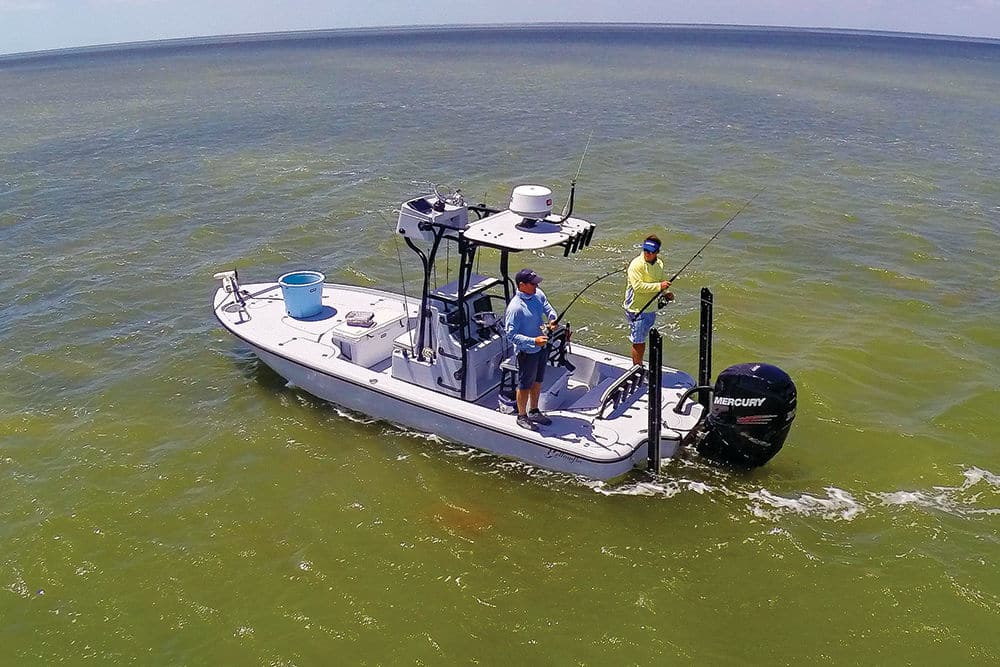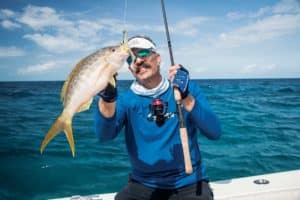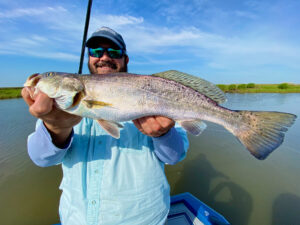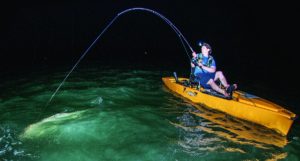How to Fish Low Tides
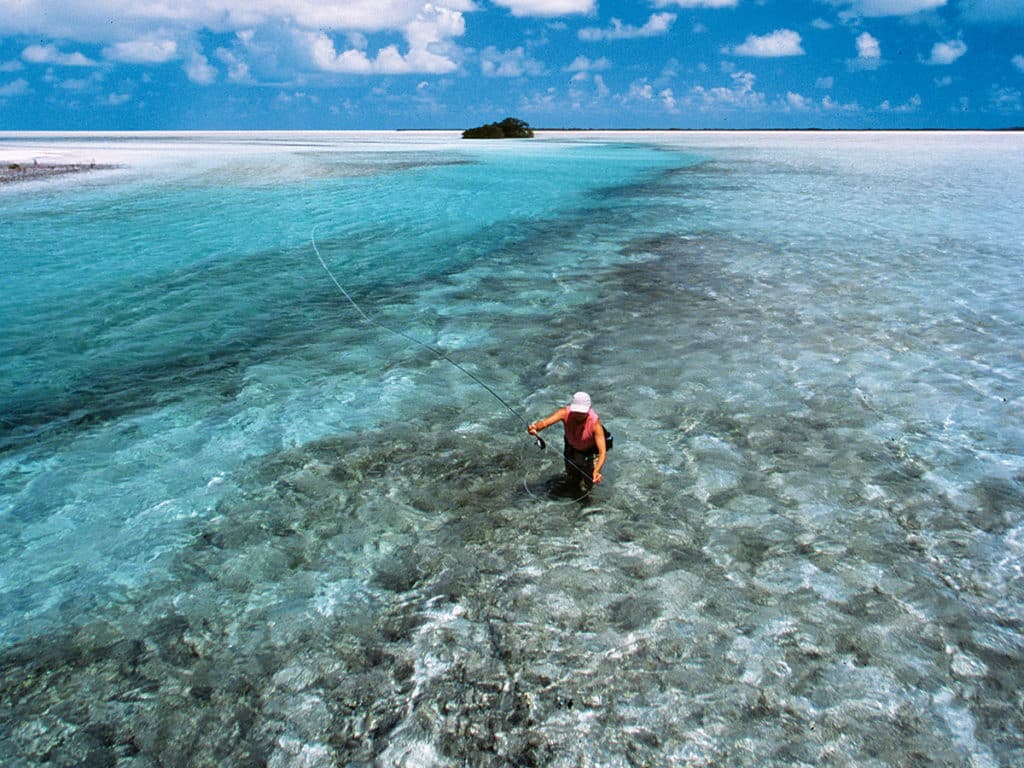
The pothole in the sea grass was the size of a city bus and too deep to walk across. But along its sandy edges and in its deepest quarters, snook were trapped like rats. We hopped out of the boat, trudged across a barren grass flat, and cast our twitchbaits into the oasis. Almost immediately, I hooked up to the first linesider of the day.
This particular flat was close to a nearby pass. Periods between falling and incoming tides were shortened because of that proximity. With the outgoing tide moving at full force, we knew the deep hole would be worthwhile to wade-fish.
But it surprised us to find snook, seatrout and redfish all trapped together in the deeper-water refuge. We had no idea what was going to strike next. Nearby, a fellow angler hooked a flounder, while someone else pulled tight on a pompano. Those catches made the total five different species. When the tide completely slowed, the bite finally shut down.
A falling or low tide doesn’t have to ruin a day’s fishing, but it might require a change in plans. Captains every day have to deal with low-water conditions, and they’ve mastered strategies to locate fish when winds, tides or currents push water out of their usual (or accustomed) spots.
Use Wind to Your Advantage
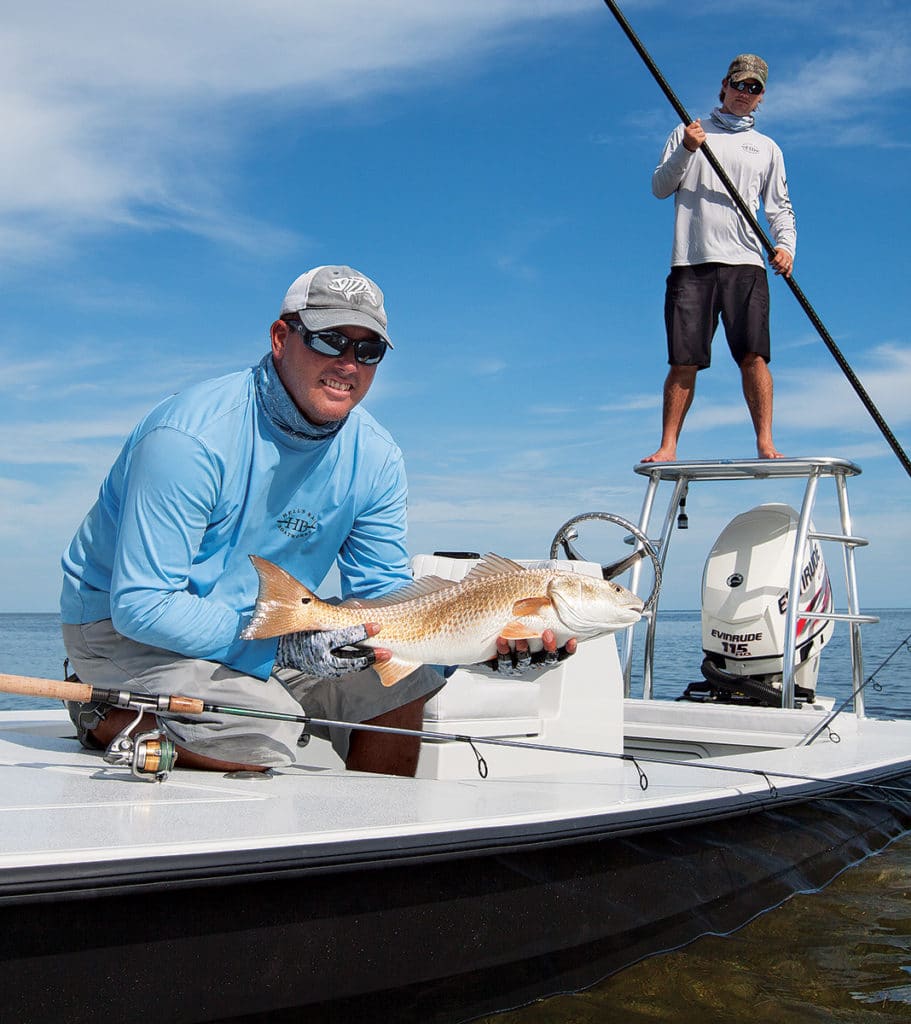
Low tides are inevitable and something anglers need to learn to contend with, says Capt. Jay Watkins, of Rockport, Texas. “Many anglers see lower tides as a detriment to their day on the water,” he says. “In reality, low tides can concentrate both baitfish and game fish. The less water we have to search, the less area for fish to hide in.”
A lack of water can displace game fish from their preferred feeding grounds, so a solution calls for finding secondary areas that allow the predators ambush and feeding opportunities. Fish adjacent areas of deeper water with similar bottom structure because fish seldom venture too far from structure or predictable food sources.
When you find your favorite flat void of water, seek out the “guts” that drain the flat. Guts, in Texas lingo, are smaller underwater highways, formed by moving water, which make excellent areas to target during low-water situations. Drop-offs along channels can be effective too, given ample bottom structure along the elevation change to create ambush points.
“In Texas, especially the middle to lower coast where I fish, we usually have wind of some kind to help us,” says Watkins. “On days with slack tides, wind provides our water movement. I prefer the smaller guts that cut into the flats off main-channel drop-offs.”
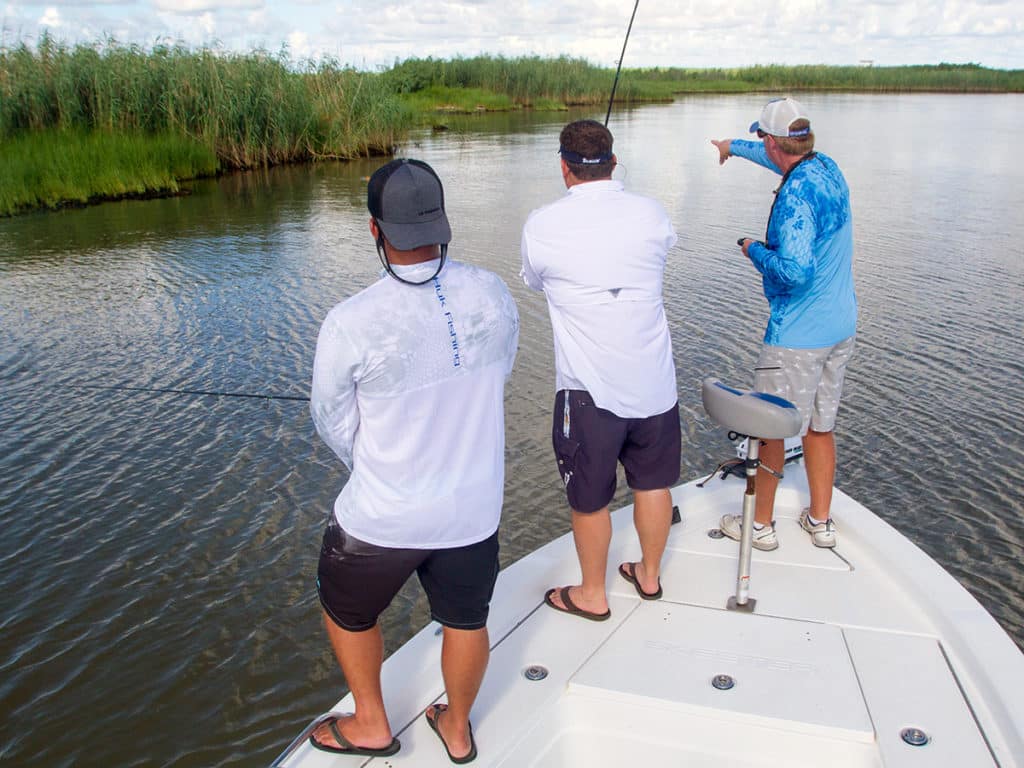
Fishermen can utilize a sustained wind to act as a current, which can result in a wide-open bite.
Set up your drift pattern or anchor so you’re fishing with the wind direction, not against it. Watkins targets windward drop-offs during low tides. The wind stacks bait along the drop-off, making for excellent conditions for both fishermen and predators. Soft Plastics and suspending baits are go-to lures under these conditions.
“Winds cause mud and sand to mix in the water, helping to disguise our lures,” says Watkins. “I believe the results are more-instinctive strikes, due to fish not actually seeing the lure clearly but reacting to its movement.”
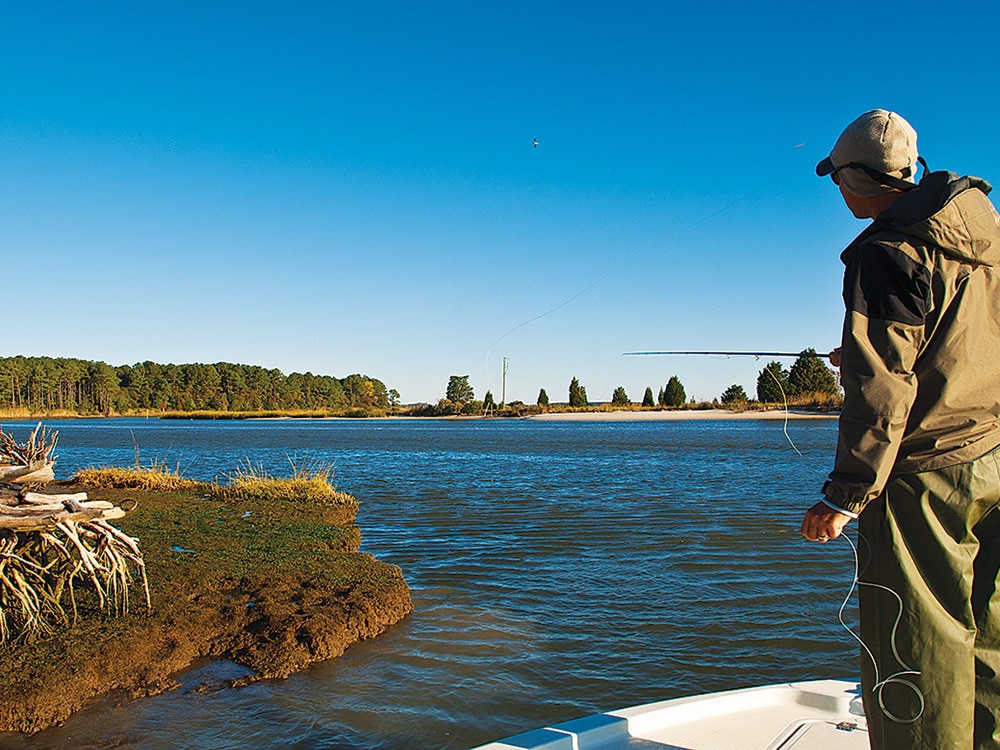
Virginia fishing captain Chris Newsome, who fishes Chesapeake Bay regularly, has his own methods for handling wind and shallow water.
“Low water proves a problem for me, since it limits the number of locations where fish will hold,” says Newsome. “I like to form a game plan prior to leaving the dock based on the day’s conditions. Most of my decisions on where and when to fish are dictated by tidal height and current flow.”
Smaller tides on the Chesapeake actually allow wind to play a vital role in tidal height.
“The bay’s western shore sees extreme lows during strong southwest winds,” says Newsome. “Realizing that wind influences not only tidal height but also current flow is a key to success.”
In general, water is always moving somewhere, and that’s especially evident on the Chesapeake. The key is to learn where to look for moving water at any given moment based on tide and wind. For example, the lee side of a shoreline might be a weak option, while the exposed side offers a higher probability of wind-generated water movement and higher water levels.
“Moving a small distance offshore or around a river bend can result in varied current flow, which will influence your success, particularly during low tide,” says Newsome.
When locating fish in deeper water, Newsome live-chums an area with peanut bunker.
“It’s an easy way to keep an eye out for game fish exploding on an easy meal,” he says. “Lone juvenile menhaden scurrying across the water’s surface is a surefire way to bring game fish up from the deeps This can be particularly valuable during low tide when fish are holding in deeper water.”
Added bonus, this technique allows for fishing topwater lures during times when you would otherwise have to bounce the bottom with jigs.
Try to Find Deeper Water to Fish
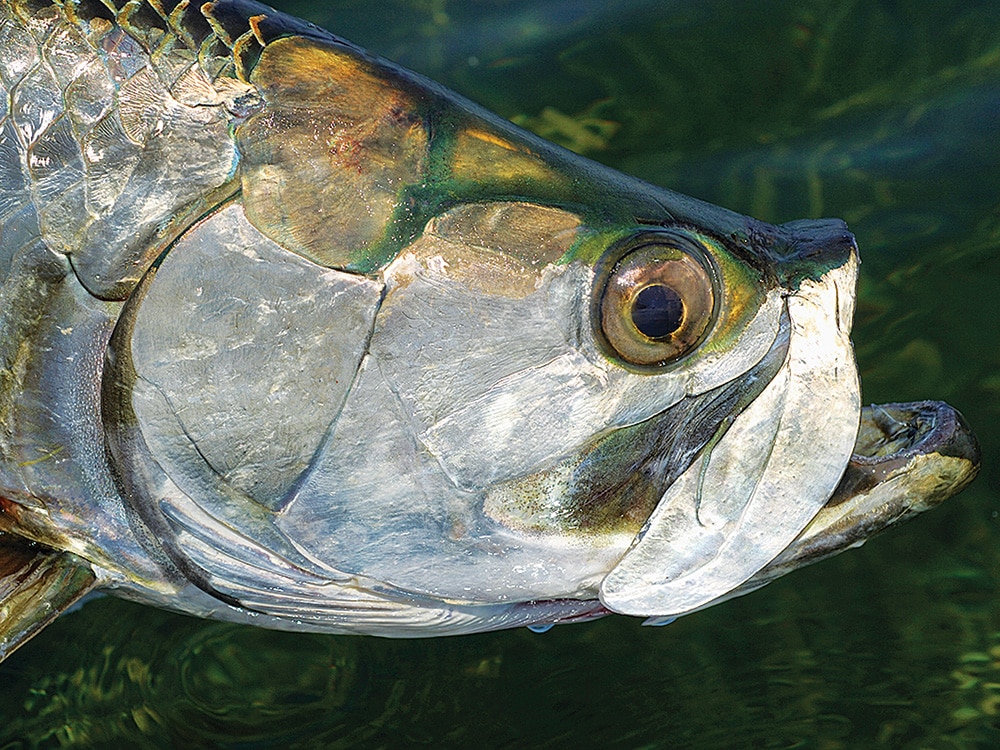
Finding deeper water with both structure and current produces fish effectively during low tides. Capt. Kevin Mihailoff, who fishes out of Everglades City, Florida, explores the seemingly endless flats, creeks, channels and structured shorelines of the labyrinthine Everglades most days.
Instead of relying on wind-driven water movement to deal with lower-tide situations, he utilizes bottom structure as fish attractors. “When the tide gets really low, the fish will look for structure in deeper water; the bottom contour can be a very important consideration, deciding where they will hold,” says Mihailoff.
In the Everglades, common structure might be downed tree limbs, uneven bottom contours, mud, sea grass or oyster bars. Also, the eddies near river bends can be holding places for snook, redfish, tarpon or goliath grouper. Game fish tend to pull away from shore banks on low tides, so don’t crowd the edges with your vessel — many anglers make the simple mistake of getting too close to the shore and running over the fish.
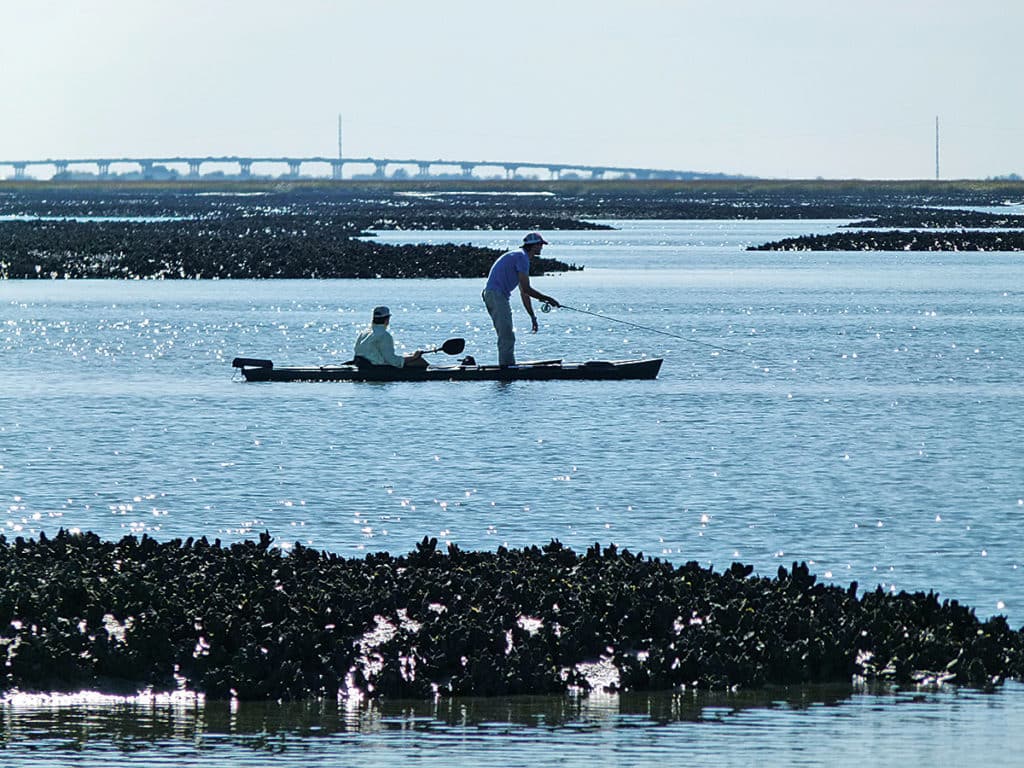
Mihailoff also says other areas too deep to fish during normal flood tides can turn red-hot when the tide drops. The deeper flats and their edges that you run full plane across on high tide could actually hold fish when the tide falls. In fact, those areas can concentrate fish, if you’re able to find them.
“The only problem is that sometimes the fish just lie on bottom and don’t feed much on the slack low tide,” points out Mihailoff. “Even though you’ve located the fish, sometimes you have to wait until the tide turns for them to perk up.”
One last option is to explore during low tide and accept that you’ll have to fish skinny water to find fish. Of course, this works best from a shallow-draft skiff, kayak or paddleboard.
“Snook and redfish start to move to extremely shallow water in March and April,” says Mihailoff, “offering fly-rodders and other sight-fishermen great targets with the warming temperatures.”
Have You Mastered the Different Tide Phases?
